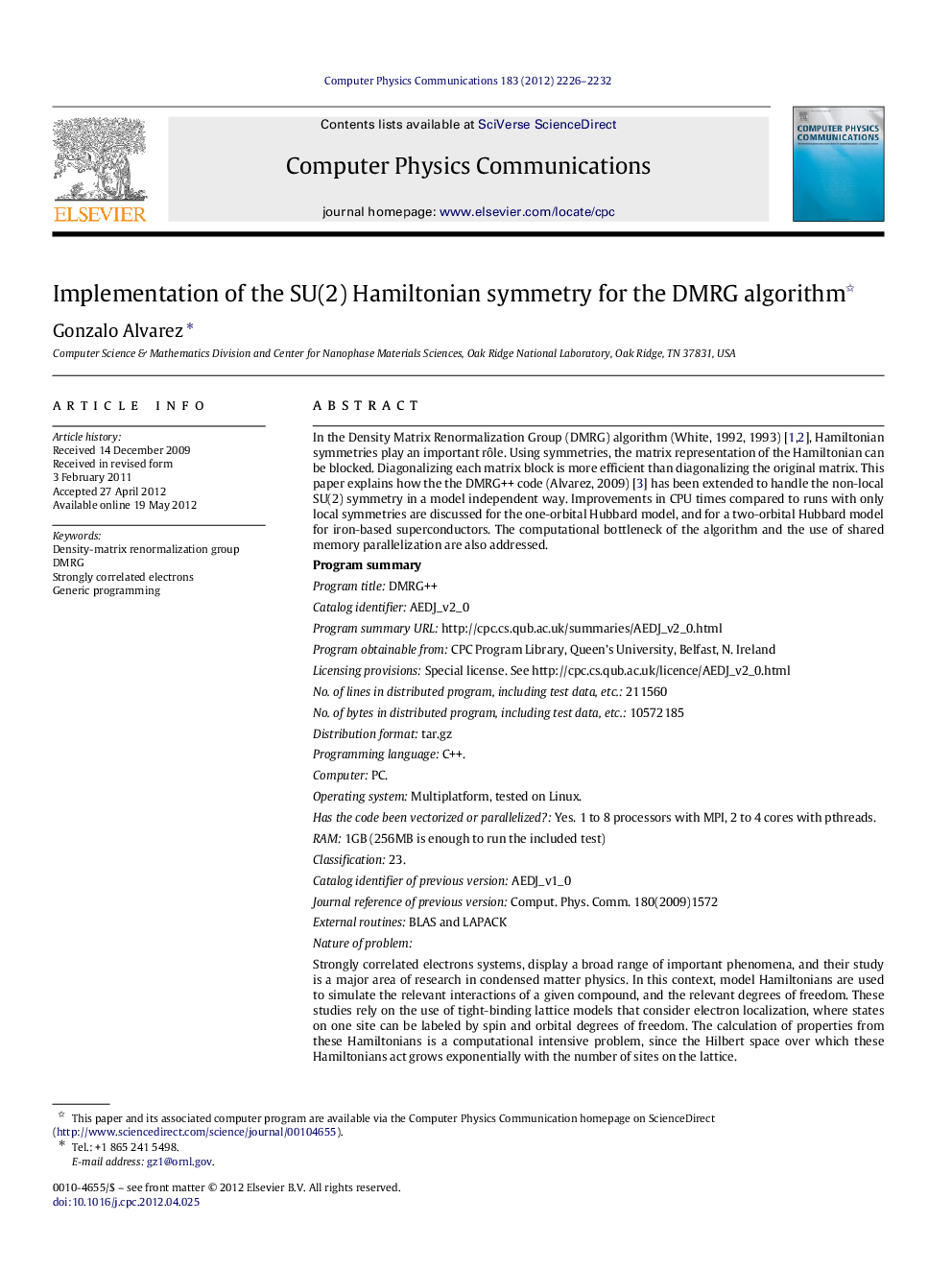| کد مقاله | کد نشریه | سال انتشار | مقاله انگلیسی | نسخه تمام متن |
|---|---|---|---|---|
| 501730 | 863636 | 2012 | 7 صفحه PDF | دانلود رایگان |

In the Density Matrix Renormalization Group (DMRG) algorithm (White, 1992, 1993) [1] and [2], Hamiltonian symmetries play an important rôle. Using symmetries, the matrix representation of the Hamiltonian can be blocked. Diagonalizing each matrix block is more efficient than diagonalizing the original matrix. This paper explains how the the DMRG++ code (Alvarez, 2009) [3] has been extended to handle the non-local SU(2) symmetry in a model independent way. Improvements in CPU times compared to runs with only local symmetries are discussed for the one-orbital Hubbard model, and for a two-orbital Hubbard model for iron-based superconductors. The computational bottleneck of the algorithm and the use of shared memory parallelization are also addressed.Program summaryProgram title: DMRG++Catalog identifier: AEDJ_v2_0Program summary URL: http://cpc.cs.qub.ac.uk/summaries/AEDJ_v2_0.htmlProgram obtainable from: CPC Program Library, Queen’s University, Belfast, N. IrelandLicensing provisions: Special license. See http://cpc.cs.qub.ac.uk/licence/AEDJ_v2_0.htmlNo. of lines in distributed program, including test data, etc.: 211560No. of bytes in distributed program, including test data, etc.: 10572185Distribution format: tar.gzProgramming language: C++.Computer: PC.Operating system: Multiplatform, tested on Linux.Has the code been vectorized or parallelized?: Yes. 1 to 8 processors with MPI, 2 to 4 cores with pthreads.RAM: 1GB (256MB is enough to run the included test)Classification: 23.Catalog identifier of previous version: AEDJ_v1_0Journal reference of previous version: Comput. Phys. Comm. 180(2009)1572External routines: BLAS and LAPACKNature of problem:Strongly correlated electrons systems, display a broad range of important phenomena, and their study is a major area of research in condensed matter physics. In this context, model Hamiltonians are used to simulate the relevant interactions of a given compound, and the relevant degrees of freedom. These studies rely on the use of tight-binding lattice models that consider electron localization, where states on one site can be labeled by spin and orbital degrees of freedom. The calculation of properties from these Hamiltonians is a computational intensive problem, since the Hilbert space over which these Hamiltonians act grows exponentially with the number of sites on the lattice.Solution method:The DMRG is a numerical variational technique to study quantum many body Hamiltonians. For one-dimensional and quasi one-dimensional systems, the DMRG is able to truncate, with bounded errors and in a general and efficient way, the underlying Hilbert space to a constant size, making the problem tractable.Running time:Varies. The test suite provided takes about 10 min to run on a serial machine.
Journal: Computer Physics Communications - Volume 183, Issue 10, October 2012, Pages 2226–2232